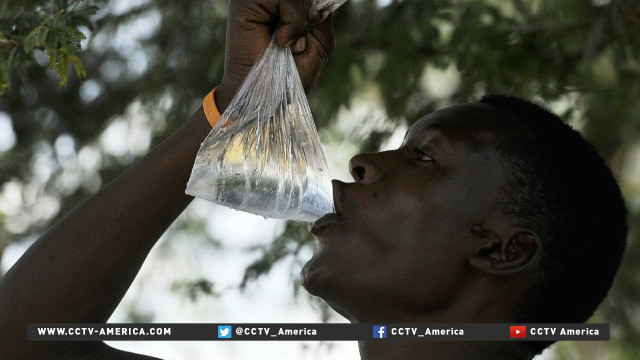In the time it takes you to watch this segment, millions of liters of water will be lost or wasted here in the United States. The biggest reasons are broken pipes and an aging infrastructure. CCTV’s Asieh Namdar filed this report on what’s being done to address the problem.

One trillion gallons of water, lost every year. That’s how much the U.S. Environmental Protection Agency, or EPA, says goes down the drain because of easy to fix leaks in American homes.
Since 2006, EPA’s “Watersense” program has offered consumers simple common-sense ways to use less water with more efficient products. Repairing the problem can save money, by bringing down utility bills and millions of gallons of water. On average, household leaks can account for more than 10,000 gallons of water wasted every year.
That’s just the water lost inside American homes. Tens of of millions of gallons of water also lost every day after leaving water treatment plants like this one in Baltimore, Maryland. While the city has been recognized for its award-winning drinking water, in terms of quality and taste– broken pipes, massive ruptures, and an aging infrastructure cause problems and headaches every winter. Utility crews are still working to make repairs to stop a stream of water flowing down neighborhood streets. Brutally cold temperatures often rupture aging water mains under the streets and the work to get them fixed– is far from over.
Rudy Chow
Director, Dept. of Public works, Baltimore
“It’s like pouring hot water in a cold glass, It’s gonna break . That’s exactly what’s going in our system so when the temperature fluctuates, it gets warm, it gets cold. Those changes will cause stress to the pipeline itself knowing it’s so old and fragile.”
He says the city received more than 6-thousand calls for water problems during the cold snap. A big jump from 100 calls a day to 400. But don’t expect things to be any better next winter.
Rudy Chow
Director, Dept. of Public works, Baltimore
“I’m very sensitive and sympathetic that they have endured these disruptions but the fact is we have an older system here” butt to 7:35:01 “I definitely expect deterioration next year, either repeat of frozen surfaces or broken water mains, we are at the very very early stage of the replacement cycle.. and remember we have 4,000 miles of pipeline to go.”
Until those old pipelines are replaced, chances are the city will continue to lose a lot of water
Rudy Chow
Director, Dept. of Public works, Baltimore
“We produce about 200, 250 million gallons daily.. 20% of that.. almost 40 to 50 million gallons lost.
The United Nations says at the current rate of usage, the fresh water supply could shrink drastically and we could have 40-percent less water than we need in 15 years.
Something to keep in mind the next time, you see your faucet drip or take that really long shower.
American’s average daily water use in 2010
Gallons of water used for public and household purposes by state per capita.
Data: USGS
Trends in American’s water supply use, 1950 — 2010
This chart looks at the estimated water use per capita, per day. It’s broken down based on public use, and total use. For example, in 1950, total water use was estimated at 180 billion gallons per day. Over a population of 150.7 million, that’s an average of 1,200 gallons of water per capita. Of that, public and domestic use accounted for 107 gallons per capita.
While total water use includes sources that individuals may never use — such as for mining purposes — it gives a general indicator how much water is used in the U.S. as the population changes.
‘Public and domestic use’ refers to public supply withdrawals and self-supplied domestic rural withdrawals. Total water use includes the previous, as well as other water uses including livestock, irrigation, mining, and commercial.
Torgny Holmgren from Stockholm International Water Institute on water shortage
CCTV America interviewed Torgny Holmgren on water shortage topic. He’s executive director of the Stockholm International Water Institute.

 CGTN America
CGTN America

